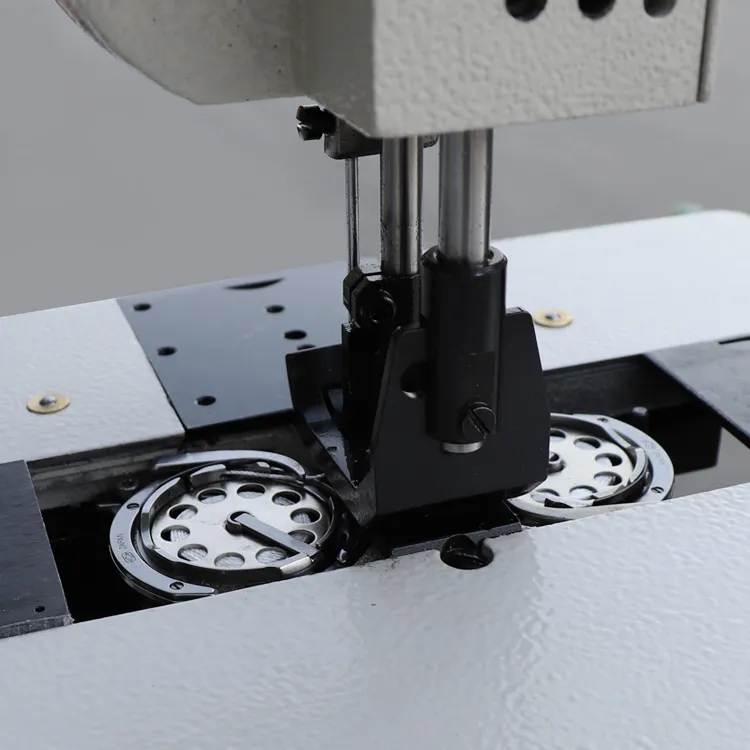can you use a twin needle on any sewing machine
Using a twin needle on a sewing machine can open up a new world of creative possibilities for sewists. It allows for the creation of two parallel rows of stitching simultaneously, which can add decorative elements to garments, crafts, and home decor projects. However, many people wonder if they can use a twin needle on any sewing machine. In this article, we will explore the use of twin needles, their compatibility with various machines, and some tips for successful stitching.
What is a Twin Needle?
A twin needle consists of two needle shafts that are attached to a single shank, allowing for two threads to be used at once. This means that you can sew two lines of stitches that are evenly spaced apart, a technique often used for decorative hems on knit fabrics, as well as for adding a professional finish to hems and seams. Twin needles come in various sizes and types, and they can be found in both universal and specialty varieties designed for specific purposes.
Compatibility with Sewing Machines
1. Basic Guidelines Not all sewing machines are created equal, and not all machines can accommodate a twin needle. Generally, any machine that allows for the use of standard needles can likely support a twin needle, but it's essential to consult your machine's user manual to confirm compatibility. Some machines may have limitations due to the width of the needle space or other design factors.
2. Needle Type When selecting a twin needle, make sure to choose the right type for your specific sewing project. Universal twin needles work well for most woven and knit fabrics, while specific types like stretch needles or jeans needles can provide better results for stretchy or thicker materials.
3. Stitch Options One critical aspect to know is that twin needles are primarily used for straight stitches and zigzag stitches. Not all stitch settings on your sewing machine will work with a twin needle, so be sure to check which stitches are compatible. Additionally, some machines may have firmware that limits the stitch width when using a twin needle.
How to Use a Twin Needle
If you have confirmed that your sewing machine can handle a twin needle, following these steps can help ensure successful sewing
1. Set Up the Machine Begin by installing the twin needle according to the manufacturer's instructions. Make sure the needle is securely inserted and that the presser foot is compatible with the needle size.
can you use a twin needle on any sewing machine

2. Threading Twin needles require two spools of thread. Use individual spools or one double-thread spool for the upper threads. Each thread will be fed through its respective needle. Take extra care to avoid tangling the threads while threading each needle.
3. Adjust Stitch Length and Tension Adjust your sewing machine’s tension settings as necessary. It's often a good idea to loosen the tension slightly and use a longer stitch length to accommodate the double stitching and prevent fabric puckering.
4. Test Before You Sew Before you start on your main project, it’s best to do a test run on a scrap piece of the same fabric. This allows you to make any necessary adjustments to tension or stitch settings.
Tips for Successful Sewing with a Twin Needle
1. Fabric Choice Twin needles are especially effective on knits and stretches but can also be used on woven fabrics. Consider the fabric structure for the best results.
2. Speed Control Sew at a moderate pace to ensure even stitching. This will help prevent skipped stitches or misalignment of the double lines.
3. Use a Walking Foot If you're working with thicker fabrics or several layers, a walking foot can help feed the layers evenly, which is crucial when using a twin needle.
4. Maintain Your Machine Regular maintenance of your sewing machine helps ensure that it runs smoothly when using specialty needles. Clean your machine regularly and replace the needle when it becomes dull.
Conclusion
Using a twin needle can significantly enhance your sewing projects, providing a professional and polished look. Although most modern sewing machines are compatible, always double-check your machine's features and user manual to ensure that you can use a twin needle effectively. With the right needle, thread, and technique, you can elevate your sewing game and explore new creative avenues. Happy sewing!
-
Leather Sewing Machine: The Industrial Standard for Tough MaterialsNewsJul.18,2025
-
Sail Making Machine: Heavy-Duty Stitching for Industrial and Marine NeedsNewsJul.18,2025
-
Sling Sewing Machine: The Backbone of Heavy-Duty FabricationNewsJul.18,2025
-
Leather Sewing Machine: Precision for Heavy-Duty StitchingNewsJul.18,2025
-
Big Bag Sewing Machine: Powering the Future of Bulk PackagingNewsJul.18,2025
-
FIBC Sewing Machine: Essential Equipment for Bulk Bag ProductionNewsJul.18,2025
-
Heavy Duty Leather Sewing Machine: A Must-Have for Professional LeatherworkNewsMay.28,2025





























